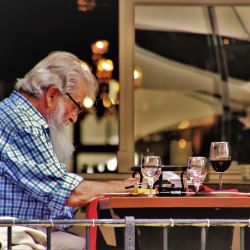Is it too early to try and summarize what we have learned about the pandemic? Pompeii's lessons on recovering from disaster. Rules to live by?
“As the pandemic engulfed the world during the past several months, I kept returning to the question of what might explain these discrepancies. It was an epidemiological whodunnit. Was the “demographic structure” of a population the real factor? Were the disparities exaggerated by undercounting, with shoddy reporting systems hiding the real toll from public-health analysts? Was government response a critical variable? Or were other, less obvious factors at play? Perhaps any analysis would prove premature.”
The eye of noted author Siddhartha Mukherjee is cast upon what factors globally account for the pandemic. Just as our responses to COVID-19 have varied across the globe, so too do the demographics, morbidity, and mortality. He concludes that it is not just one variable, but many, acting in and out of concert with one another. From the New Yorker, from a physician that has made explaining health science a literary art, Why Does the Pandemic Seem to Be Hitting Some Countries Harder Than Others?
“It’s a perspective echoed by Zeynep Tufekci, the scholar of technology who has become perhaps the most treasured “outsider” analyst of the disease and pandemic policy in the U.S. — a natural contrarian who has, again and again, called out the limitations and perversities of public-health guidance on everything from masking to asymptomatic transmission to the role of aerosols and the importance of ventilation. She recently surveyed the system’s biggest failures — including that experts sometimes misled the public on key points out of fear that advising them honestly would lead them to take more risk; that hard rules (six feet apart, for no more than 15 minutes) were offered in place of broad principles (“like Japan’s, which emphasize avoiding the three C’s — closed spaces, crowded places, and close contact”); and a preference for false certainty (“There is no evidence of human-to-human transmission”) rather than honest nuance (“There is increasing likelihood that human-to-human transmission is taking place, but we haven’t yet proven this”).”
This is perhaps the best, most balanced presentation of the COVID-19 pandemic that I have read; you need to read it and share it. From New York Magazine, How the West Lost COVID
“Everyone in our nation wants a quick return to business as usual, complete with some infrastructure upgrades and new jobs. But for the descendants of slaves, and for other historically disadvantaged groups, this relief effort could also provide opportunities for social mobility. The good news is that historical evidence suggests we can have all this and more — so long as our politicians are willing to be as generous as a Roman emperor once was, some 1,950 years ago.”
What is that old saying about repeating history? An interesting article on how the Romans bailed out the survivors of Pompeii. From the New York Times, How a Disaster Relief Program Changed the Roman Empire for the Better
Finally, there is this short list of 100 rules to live by based on the writings of the Stoics. Even if you do not follow them, they are great food for thought. PS – the rules are a big fan of reading, just like you. 100 (Short) Rules for a Better Life

